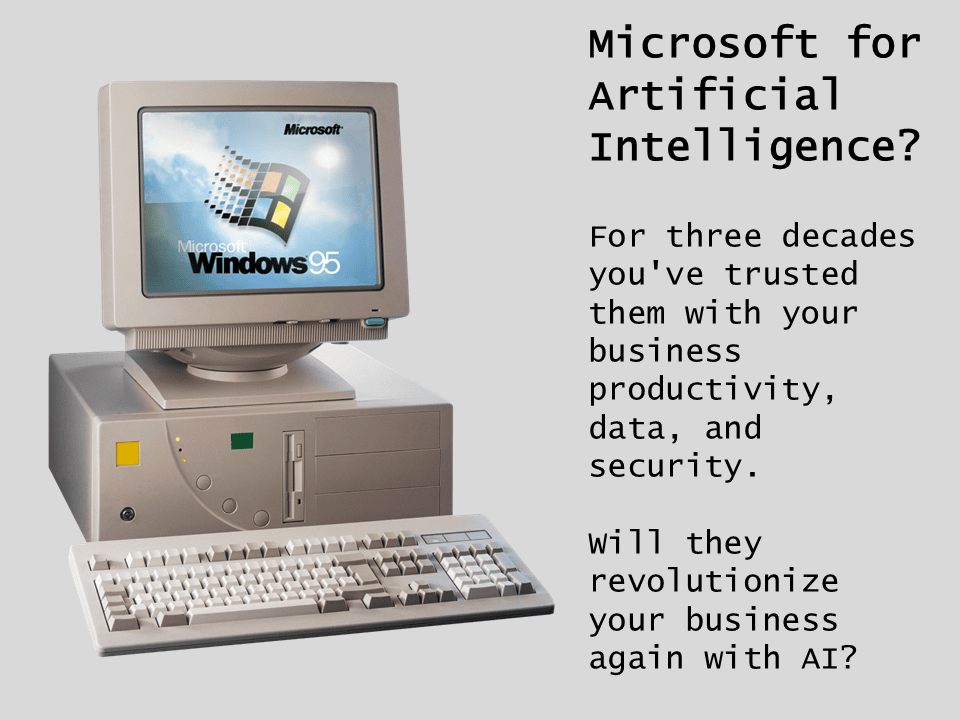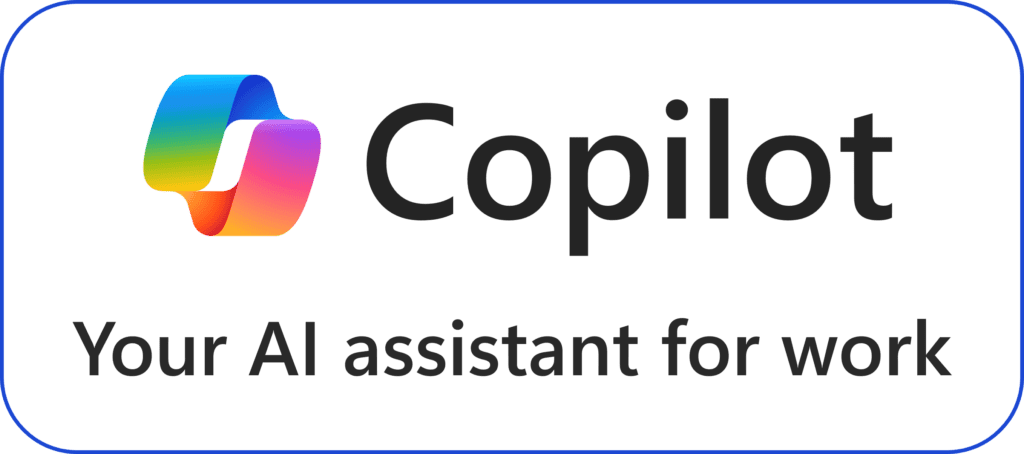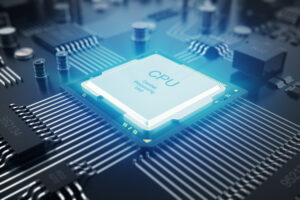Be in the know: AI News & Free Articles
Your source for AI news and training options for your team!
Welcome to your ultimate source for cutting-edge AI insights! Dive into the world of Microsoft AI, where you’ll discover the latest advancements in Azure and Copilot. Stay informed about groundbreaking technologies like ChatGPT, Google Gemini, Apple Intelligence, and Meta AI.
Explore the transformative power of customized chatbots, the revolutionary impact of AI in healthcare, and the innovative strides in AI-driven robotics. Learn about AWS Trainium, Amazon’s custom AI chip designed for deep learning, and NVIDIA’s AI tools like Chat with RTX and NVIDIA Omniverse. Don’t miss out on xAI Grok, Elon Musk’s conversational AI designed for both serious and casual discussions.
Join us as we navigate the future of artificial intelligence and its profound influence on our world and how we get work done. We will also focus on skills training that helps individuals, businesses, and organizations make practical use of these tools in a responsible way.
-
✴︎
Microsoft — Responsible AI, Responsible Choice for Businesses

You keep hearing about artificial intelligence (AI), but is it really going to impact your business? It’s a good question. What you need is a reliable partner to help you. What if you already had one and just didn’t know it?
Does your organization already use Microsoft? You know, Word, Excel, Outlook, PowerPoint, and now Teams? If like most companies you do, then you’ve just uncovered the partner that you already trust with your productivity, data, and security. If this reasoning resonates, read on and discover how you could benefit from AI sooner than later.
A Legacy of Trust and Innovation
Most individuals and businesses have been using Microsoft technology for decades. Did you know that Microsoft Word was launched in October 1983, and Microsoft Windows was released in November 1985? These tools, and many others, have become staples in the business world. Today, the majority of businesses are using Microsoft Office apps, even if they use Apple platforms. This widespread adoption underscores the trust businesses place in Microsoft’s technology.
Many do not realize is that Microsoft has been a key partner in the development of ChatGPT
Pioneering AI with ChatGPT
What many do not realize is that Microsoft has been a key partner in the development of ChatGPT, the now-famous AI tool released in 2023. This partnership began in 2019 and has since evolved into a multiyear, multibillion-dollar investment. OpenAI, the company that developed ChatGPT, uses Microsoft as its exclusive cloud provider. Microsoft, in turn, integrates the tech behind ChatGPT into its existing products. This collaboration is enabling businesses using Microsoft technology to have access to cutting-edge AI capabilities right inside the apps they already use every day.
Commitment to Responsible AI
But isn’t AI dangerous? Microsoft is deeply committed to responsible AI. The company has published their Responsible AI Standard, a framework built on six principles: fairness, reliability and safety, privacy and security, inclusiveness, transparency, and accountability. This commitment is reflected in Microsoft’s efforts to build AI systems that uphold these values and keep your trust.
Microsoft has forged partnerships with industry leaders like NASDAQ and Ernst Young
Titans of Finance — Real-World Applications
At the October 2024 Microsoft AI Tour in Boston, it was fascinating to learn that Microsoft has forged partnerships with industry leaders like NASDAQ and Ernst Young. NASDAQ, for instance, uses Microsoft’s AI solutions for its Boardvantage® SaS, a premier solution that handles sensitive business data. Similarly, Ernst Young relies on Microsoft’s AI for its EY TaxChat® service, ensuring that their clients’ confidential financial and tax information is secure. If these titans of finance trust Microsoft, why shouldn’t you?
Microsoft 365 and Copilot put the power of productivity in your hands, wherever you choose to work. Starting Your AI Journey with Microsoft
Most businesses recognize AI as the next big thing but are unsure where to start. The answer lies with a trusted partner: Microsoft. Their AI tool, aptly called Copilot, is now seamlessly integrated into the apps businesses already use and trust, including Word, Excel, PowerPoint, Outlook, and Teams. This integration allows businesses to provide their employees with personal AI assistants while addressing common concerns with artificial intelligence.
Launched in November 2023, Microsoft Copilot is the new AI tool that can make you more productive within your favorite Microsoft Office apps. Empowering Employees with AI
But aren’t employees scared that AI will take their jobs? Not according to recent studies. They find that most employees not only want to use AI, but they also expect their employers to provide it. They also expect clear policies, robust security, and employee skills training.
Not only is technology exciting, but with a trusted partner like Microsoft, it is easier than you think to start reaping the benefits of AI. Ask your IT team about turning on Microsoft Copilot for you!
-
✴︎
Do you need a strong GPU to use AI?
Do you need a strong GPU to use AI? In the world of artificial intelligence (AI), deep learning has emerged as a powerful tool for solving complex problems. From image recognition to natural language processing, deep learning algorithms are transforming industries. However, to harness the full potential of these algorithms, the right hardware is essential. This is where Graphics Processing Units (GPUs) come into play. But does that mean everyone needs a strong GPU to use AI?
The Power of Parallel Processing
GPUs are designed to handle multiple tasks simultaneously, making them ideal for the parallel processing required in deep learning. Unlike Central Processing Units (CPUs), which are optimized for sequential tasks, GPUs can process thousands of operations in parallel. This capability significantly speeds up the training of deep learning models, which often involve large datasets and complex computations.
CPUs: The Brains of the Computer
Central Processing Units (CPUs) are often referred to as the brains of the computer. They were developed to handle a wide range of tasks, from running operating systems to executing complex calculations. CPUs are optimized for sequential processing, meaning they can handle one task at a time very efficiently. This makes them ideal for tasks that require a lot of decision-making and logic, such as running applications and managing system resources.
GPUs: The Muscle of the Computer
Graphics Processing Units (GPUs), on the other hand, were originally developed primarily for gaming. Their main purpose was to handle the complex graphics rendering required for video games, which involves processing a large number of pixels simultaneously to create smooth and realistic images. This capability made GPUs highly effective for tasks that could be parallelized, such as rendering 3D graphics and animations. As technology advanced, the potential of GPUs for other applications became apparent. Researchers and developers realized that the parallel processing power of GPUs could be harnessed for a wide range of computational tasks beyond gaming. This led to the adoption of GPUs in various business applications, particularly in fields that require intensive data processing and complex computations, such as deep learning, scientific simulations, and financial modeling.
Working Together
CPUs and GPUs work together to provide a balanced and efficient computing experience. While the CPU handles general-purpose tasks and decision-making, the GPU takes on the heavy lifting of parallel processing. In deep learning, this means the CPU can manage the overall workflow and data preprocessing, while the GPU handles the intensive computations required for training models.
We’ve All Been There
A single GPU can tackle many tasks simultaneously Picture this: you’re at a bustling restaurant with a large group of friends. The place is packed, and there’s only one waiter trying to serve everyone. Naturally, it takes a while for your food to arrive. Now, imagine if there were several waiters, each attending to different tables at the same time. The service would be much quicker and more efficient. This scenario is quite similar to how CPUs and GPUs work. While a single CPU handles tasks one at a time, a single GPU can tackle many tasks simultaneously, speeding up the entire process.
Does a GPU Help Run AI Applications on a PC?
AI applications, like Microsoft Copilot, Google Gemini, and ChatGPT, primarily rely on cloud-based infrastructure to perform generative AI tasks. This means that the heavy computational work, such as processing large datasets and running complex AI models, is handled on powerful servers in the cloud rather than on your local PC. This approach allows users to benefit from advanced AI capabilities without needing high-end hardware on their personal devices.
However, having a good GPU on your PC can still be beneficial for certain tasks. For example, if you’re working with applications that involve graphics rendering, video editing, or other GPU-accelerated tasks, a strong GPU can enhance performance and efficiency. Additionally, some AI applications might leverage local GPU resources for specific operations, but the core generative AI work for Microsoft Copilot is handled in the cloud.
Examples of Business Applications That Benefit from a Strong GPU
- Video Editing and Rendering: Applications like Adobe Premiere Pro and DaVinci Resolve use GPUs to accelerate video rendering and editing processes. A powerful GPU can significantly reduce the time it takes to render high-resolution videos and apply complex effects.
- 3D Modeling and Animation: Software such as Autodesk Maya, Blender, and Cinema 4D rely on GPUs for rendering 3D models and animations. A strong GPU can handle the intensive computations required for creating detailed and realistic graphics.
- Data Analytics and Visualization: Tools like Tableau and Power BI can leverage GPU acceleration to process and visualize large datasets more efficiently. This allows for faster data analysis and more interactive visualizations.
- Scientific Simulations: Applications used in fields like computational chemistry, physics, and biology often require significant computational power. Software such as GROMACS and ANSYS can utilize GPUs to perform complex simulations and calculations more quickly.
- Machine Learning and AI: Deep learning frameworks like TensorFlow, PyTorch, and CUDA are optimized for GPUs. A strong GPU can accelerate the training and inference of machine learning models, making it essential for AI research and development.
- Financial Modeling: In the finance industry, applications that perform risk analysis, algorithmic trading, and portfolio optimization can benefit from GPU acceleration. This allows for faster and more accurate computations, which are crucial for making informed financial decisions.
- CAD Applications: Computer-Aided Design (CAD) software such as AutoCAD, SolidWorks, and CATIA benefit from GPU acceleration for rendering complex designs and simulations. A powerful GPU can enhance the performance and efficiency of these applications, making it easier to work with detailed and intricate models.
Choosing the Right Hardware for Your Needs
If your primary use for the computer is business-related tasks and you want to take advantage of AI services like Microsoft Copilot and Microsoft Azure AI services through applications, you do not need to invest in a high-end GPU. These AI services are designed to run efficiently using cloud-based infrastructure, meaning the heavy computational work is handled on powerful servers in the cloud rather than on your local machine.
As long as your computer meets the general requirements for running business applications and has a decent CPU, you should be able to use these AI services effectively without needing a beefed-up GPU. However, if you plan to do any intensive graphical work, as we discussed, then investing in a more powerful GPU would be beneficial.
Are You Ready to Unlock AI in Your Workplace?
Dive deeper into the real-world applications of AI with our specialized training classes. Whether you’re a Business Leader, an IT Professional, or an End User, we have tailored courses designed just for you. Equip yourself and your team with the knowledge and skills to maximize your AI investment and achieve the best ROI. Join us and begin your AI journey today!
See more articles…
Or browse by category…
- Free Articles (10)
- News (6)






